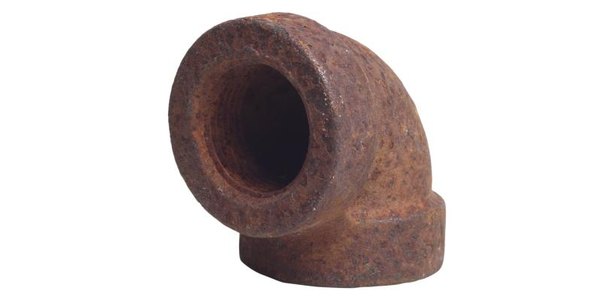Iron pipe in plumbing systems
Where alterations or repairs are made to iron pipe, it is wise to adapt the immediate area of the existing plumbing system to either copper or plastic pipes. This avoids the difficult job of threading new pipework, which requires the use of stocks and dies. These are not easily obtained and need considerable skill to achieve a satisfactory result. When connecting copper pipes to galvanized iron, use a special fitting designed to prevent ‘electrolytic’ corrosion. Iron pipes and fittings have to be loosened with a pair of Stillson wrenches.

A great deal of pressure from the plumber is often required, especially when joints are rusty. If necessary, you can use heat or penetrating oil to free stubborn joints, using the hacksaw as a last resort. When undoing the fitting, use one wrench to hold the adjacent pipe as you apply pressure with the other. Several fittings are available to adapt iron pipe. These have compression or capillary fittings at one end, and usually female threads at the other. When connecting to iron pipe, either plumber’s hemp and jointing compound or the more modern ptfe tape must be wrapped around the threaded end of the pipe, to ensure a watertight join, before the nut is fitted and tightened. If you are using hemp, first smear the thread with jointing compound, and then ‘tease’ out a suitable length of hemp. Wind this tightly around the pipe in the direction of the thread usually clockwise, starting about one thread back from the end of the pipe.
Do not use too much hemp or it will be forced off the thread when the nut is tightened. Ptfe tape should be bound around the thread at least a couple of times, again in the direction of the thread and leaving the first thread or so clear. 
The nut should now be engaged on the thread and tightened with an adjustable spanner to complete the joint.
